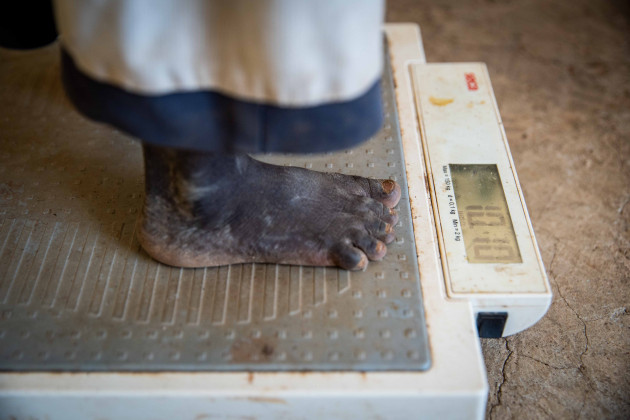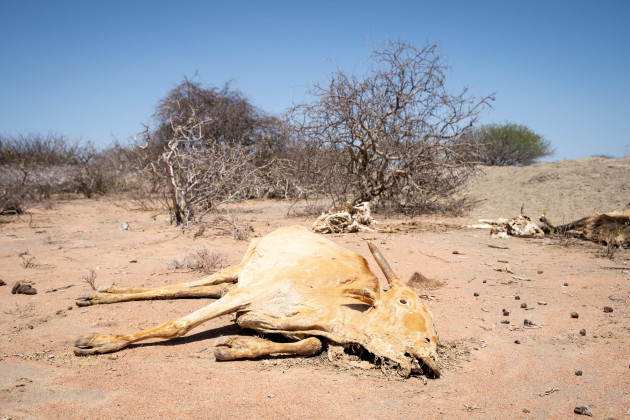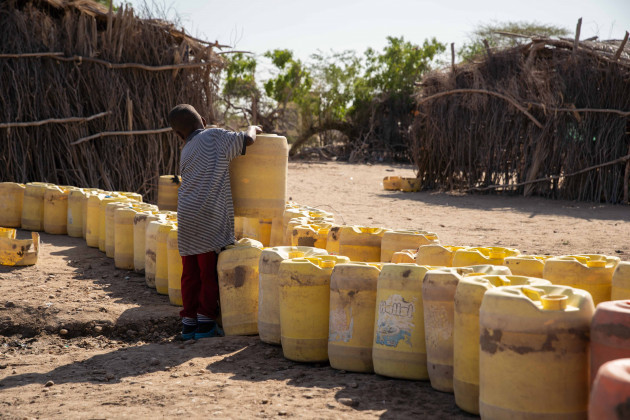THIS COW AND more than 40 others are decaying on the side of a dusty road in the south-east of Kenya as the country battles its worst drought in decades.
Around half a million people are estimated to be at risk of famine in the Horn of Africa at the moment.
The Journal recently visited Turkana County and Tana River County in Kenya to report on the impacts of drought.
Crying children waiting for help at a malnutrition clinic and dead cows left to rot were among the indicative scenes captured on the trip.
The country has been experiencing drought for two years with the Kenyan president declaring it a national emergency last September.
Livestock deaths, failed crops and higher levels of malnutrition are among the main impacts of drought.
The reality of malnutrition was seen first-hand at a clinic for women and children in Turkana County.
Women waited with children to be assessed for malnourishment. The children’s height, weight and arm size are examined to see if they are in a healthy range for their age. Many in this area are not.
Patrick Lokitela, a Concern health and nutrition officer, said the drought has been “very challenging” for people coming to the clinic.
The Journal spoke to Engloit Lokidor who attended the clinic with her sons Eragan and Maraka.
Through a translator, she said she has nothing to hope for at this stage but for the hunger to end.
Drought has had a severe impact on the health of goats, cows, sheep and camels across the country.
Many livestock have died – starkly shown here in images from the road to Ruko Village in Tana River County.
Around 45 cattle carcasses were found in various stages of decay along a sandy road near an empty water pan where rainwater would usually collect.
The Journal met villagers from different areas in the north west and south east of the country.
Many were worried about their livestock dying and the rising cost of goods like maize.
Access to clean water is still a challenge especially in times of drought. Some get it from hand dug wells, others from community water schemes.
The animals that have managed to survive until now are often malnourished and impacted by disease.
Goats, donkeys and camels are the most hardy in times of drought. Cows and sheep are less able to deal with the situation and many have already died.
No news is bad news
Support The Journal
Your contributions will help us continue
to deliver the stories that are important to you
Support us now
With the help of irrigation schemes, people in even the driest areas are able to grow fruits and vegetables.
Watermelons, tomatoes, peppers, kale, onions and mung beans are among the crops growing.
Maize is also commonly grown around the country. It is the only meal some people eat in a day in the form of a stiff porridge called ugali.
At the heart of this story are the people whose livelihoods have been disrupted by the drought.
People who rely solely on livestock for food and income whose animals have died.
Families who can no longer afford to pay school fees for their children due to the rising cost of living. The price of essentials like maize and cooking oil, for example, has doubled.
People are struggling and waiting for the rains to fall. With the effects of climate change exacerbating as the global temperature continues to rise, these droughts will occur again and their impacts will continue to be harshly felt.








































Discussion about this post